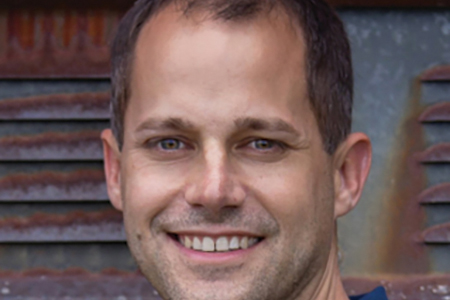How We Landed In The International Space Station
By Brian Hess
 Looking back, it’s ironic that we named our company LaunchPad Medical. Our inspiration for the name came from our plan to take challenging ideas and materials and “launch” them into the medical space to revolutionize healthcare. But it never dawned on me to take our research to the International Space Station (ISS).
Looking back, it’s ironic that we named our company LaunchPad Medical. Our inspiration for the name came from our plan to take challenging ideas and materials and “launch” them into the medical space to revolutionize healthcare. But it never dawned on me to take our research to the International Space Station (ISS).
COUNTERING BONE LOSS IN ASTRONAUTS
It was at a MassChallenge presentation that I first heard about research on the ISS regarding the effects of microgravity on astronaut bone health. Without intervention, even a short stay in reduced gravity on the ISS can drastically reduce bone mass in astronauts, mimicking the symptoms of osteoporosis on Earth.
All of this was interesting to us because in developing Tetranite, our injectable bone adhesive, we considered how we might solve many problems that patients with osteoporosis face: bone fragility, breakage, and the challenges presented by surgical components used to fuse together broken bones. Tetranite helps hold broken bones together while promoting bone growth and is intended to replace (or at least augment) the rods and screws historically used to surgically repair bone breakages.
We applied for and won the MassChallenge “Technology in Space Prize” from the ISS and Boeing, enabling us to conduct the experiment on the ISS National Laboratory. Our experiment, which launched in December 2017, studied the response of osteoblasts (a bone cell subtype responsible for renewing bones) to Tetranite. We found that in the conditions of space-induced rapid bone loss, the osteoblasts responded to our product by displaying growth and bone-forming behaviors.
HOW SPACEFLIGHT CAN BENEFIT STARTUPS
Our spaceflight project has contributed not only to advancing the R&D of our bone adhesive but also to accelerating its path to market. For example, we are currently working with the FDA to begin our first human clinical trial.
Doing an experiment on the ISS National Laboratory can elevate research to a whole new level, and companies interested in space-based research should reach out to the ISS National Lab to see what is possible. My advice to companies preparing to conduct research in space is that it is essential to budget for delays. Our research required us to start our cell culture experiment on Earth just days before liftoff. Last-minute launch delays of a few days meant that we had to scrap the samples we had prepared and start again. We ultimately prepared several replicates of our experiment before the actual launch to be prepared for many different scenarios.
The visibility we garnered from our involvement with the MassChallenge was invaluable. Our research received considerable media coverage which, along with the prize, created a buzz around our company and gave us the credibility that prospective investors were seeking. As a result, we secured additional funding.
If I can get one message across it is this: You cannot even imagine the research possibilities available to you on the space station. One conversation with someone from the ISS National Laboratory could help you clarify research objectives and identify how your ideas might be tested or advanced in space. Microgravity, the unique vantage point of the station, and exposure to the harsh conditions of space can provide valuable information that is not accessible on Earth. For us, it is rapid bone loss. For another company, it could be materials testing through exposure to the space environment. You just don’t know until you learn exactly what is possible through the ISS National Laboratory.
BRIAN HESS is an engineer and CEO of LaunchPad Medical, located in Lowell, MA.
